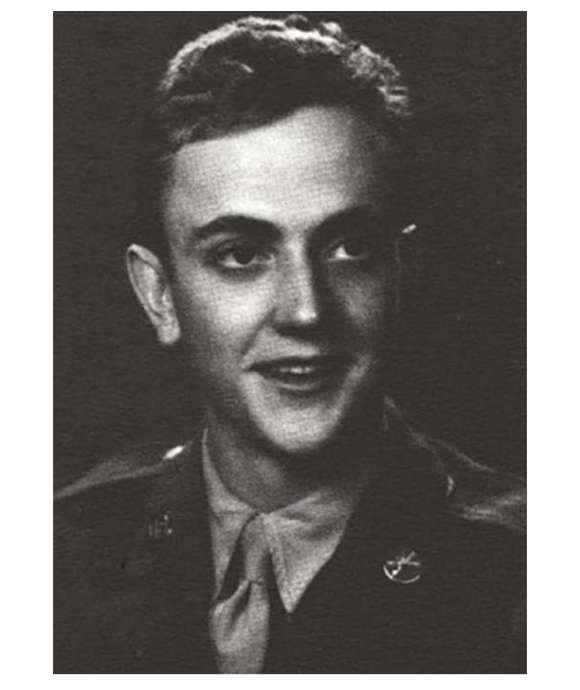In advance of a discussion on Slaughterhouse-Five, Assistant Director for Curatorial Services Kimberly Guise posed some questions to Kurt Vonnegut Museum and Library Curator Chris Lafave.
The Kurt Vonnegut Museum and Library celebrated their grand opening in a new home in November 2019 in Indianapolis, Indiana. The organization states “In honor of his wit and wisdom, the Kurt Vonnegut Museum and Library champions the literary, artistic, and cultural contributions of the late writer, artist, teacher, and Indianapolis native Kurt Vonnegut. The library and museum serve as a cultural and educational resource unique to the nation.”
Guise: When did you first encounter Vonnegut & what drew you in?
Lafave: So this is an interesting story, most people discover Vonnegut in middle school or high school, to the best of my knowledge I was in university. I was a history major at Ball State University in Muncie, Indiana, and spending most of my time playing in a band, but a friend of mine lent me Breakfast of Champions, and reading that book drastically changed the way I looked at literature, and honestly future reads of that same book continued to release information I had not absorbed the first time I read it. I say this is funny because it’s possible I read Slaughterhouse-Five when I was much younger but I just cannot confirm it for sure.
As time went on I started to read more of Kurt’s work, I read the collection of short stories Welcome to the Monkey House on the night Kurt passed, I happened to be driving by a library when my mother called me with the news. So my growth into a Vonnegut fanatic I can actually answer in your next question…
Guise: What's your favorite Vonnegut work?
Lafave: Like many people of my generation, the economy collapsed just as I left school, and I was living in Chicago, Illinois with about seven roommates and life was looking rather grim. So I rented Cat’s Cradle from the local library, and that was the tipping point. Cat’s Cradle was a funny book about religion, weaponry and the end of the world, and I just ate it up. There was something comforting about his voice telling me that the world was on fire in 1963 and was on fire in 2007 and would continue to burn because humans are fallible and you might as well laugh. That book combined with Steinbeck’s Cannery Row really helped me get through the great recession.
Guise: What's your favorite Vonnegut Museum and Library collection piece?
Lafave: I could talk about this for quite some time, some of the obvious ones involve the letter that his father wrote to him during the war that is labeled “missing 1/7/1945” that Kurt never opened. But I have to go with the letter to the editor Kurt wrote in 1961 to Look Magazine, annihilating them for supporting Little League Baseball, which he accuses of “wrecking the family supper hour.” He’s 100 percent correct about that, but his language is so biting and aggressive that you cannot help but laugh. Remind me and I’ll read it to you during the talk, although I believe it’s up on our virtual museum page.
Guise: Do you have a Vonnegut Museum and Library war story that you can share?
Lafave: He had several, he spoke rudimentary German thanks to his family background, the other prisoners sort of elected him leader of the prisoners. One night he got very angry at the way they were being treated and told the guards in German what he was going to do to them when the Russians got there, they beat Vonnegut up pretty badly and he wasn’t the leader of the prisoners anymore.
In terms of different wars, I did have the honor and strange experience of giving a tour to a woman who survived the bombing of Dresden as a baby, they had fled Soviet occupied Lithuania, only to find themselves in Nazi Germany. Her father was shot down over France and she was with her mother in Dresden when the bombing took place. She eventually immigrated to the United States, and her son was a Vietnam veteran who was also with her. Giving that tour and hearing their story was a haunting experience.
View the Vonnegut Museum and Library’s Slaughterhouse-Five exhibit with a walkthrough by Curator Chris Lafave.

"I've too damned much to say": Kurt Vonnegut, World War II, and Slaughterhouse-Five
From January 1943 - June 1945, writer Kurt Vonnegut served in the US Army. His experiences with the 106th Infantry Division during the Battle of the Bulge and then later as a POW in Dresden imprinted his life and provided traumatic (and sometimes comedic) material for his novel Slaughterhouse-Five and other works.
Kim Guise
Kimberly Guise holds a BA in German and Judaic Studies from the University of Massachusetts Amherst. She also studied at the Universität Freiburg in Germany and holds a masters in Library and Information Science (MLIS) from Louisiana State University. Kim is fluent in German, reads Yiddish, and specializes in the American prisoner-of-war experience in World War II.
Cite this article:
MLA Citation:
APA Citation:
Chicago Style Citation:


![Max Fuchs, New York City cantor, sings as Rabbi Sydney [sic] Lefkowitz, Richmond, VA, conducts the first Jewish services from Germany.](/sites/default/files/styles/max_650x650/public/2025-10/image1.jpg)






